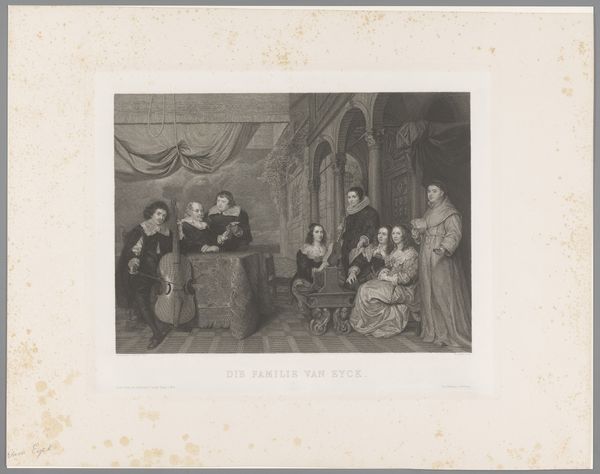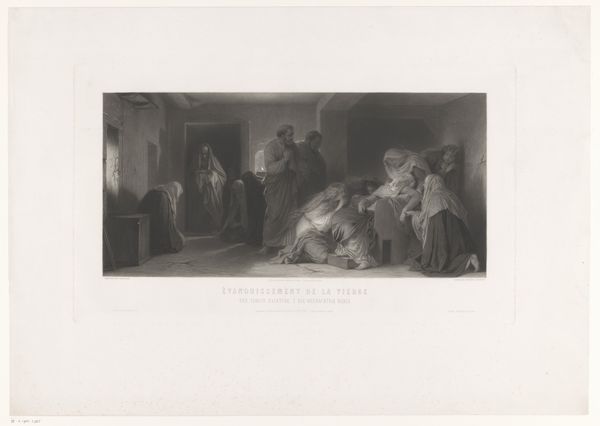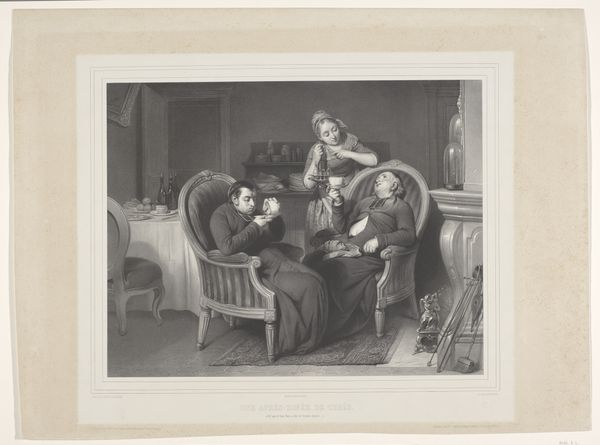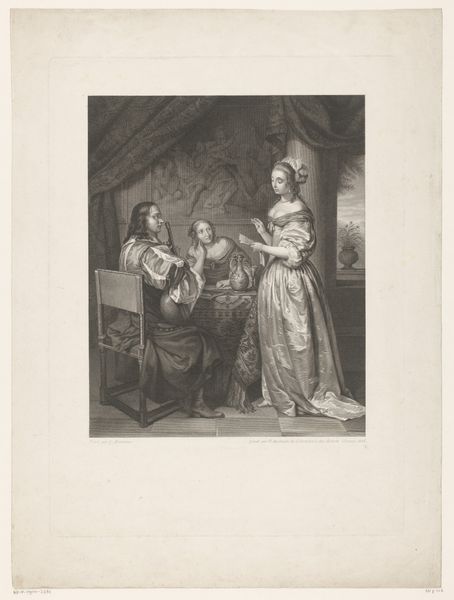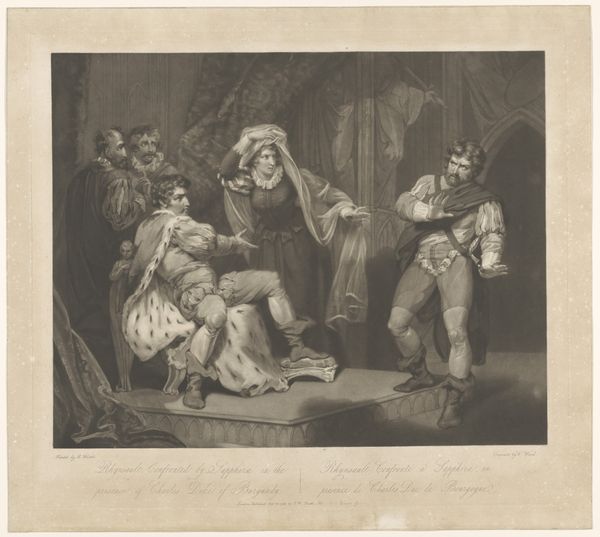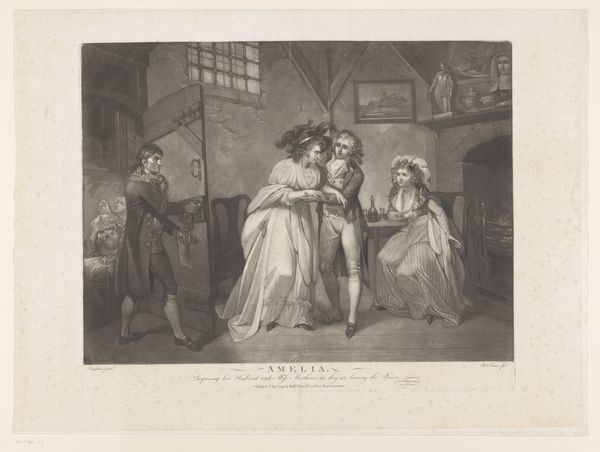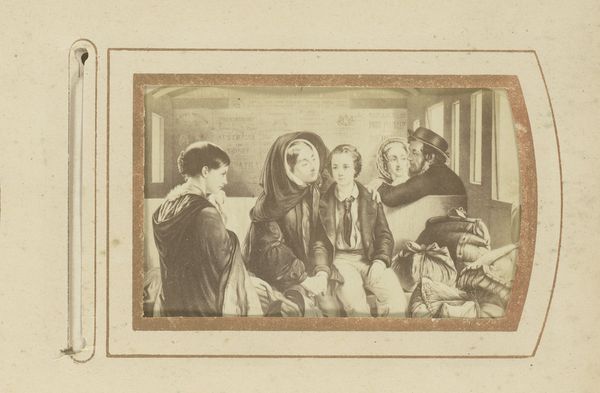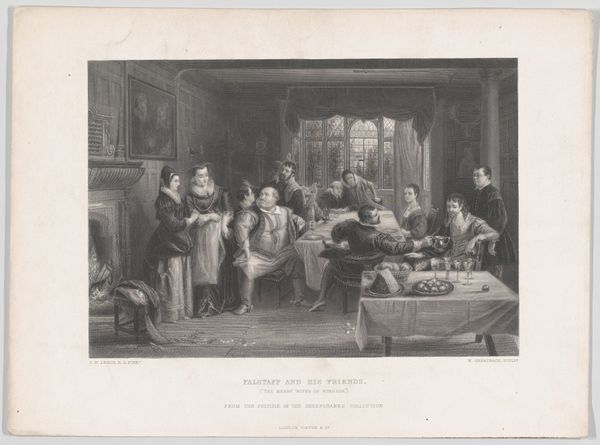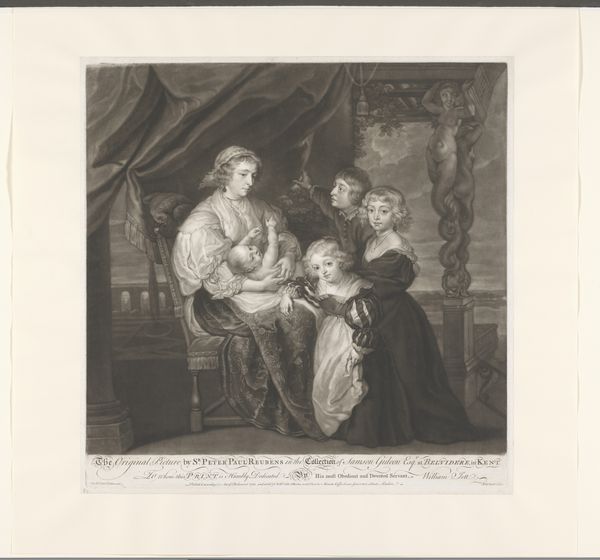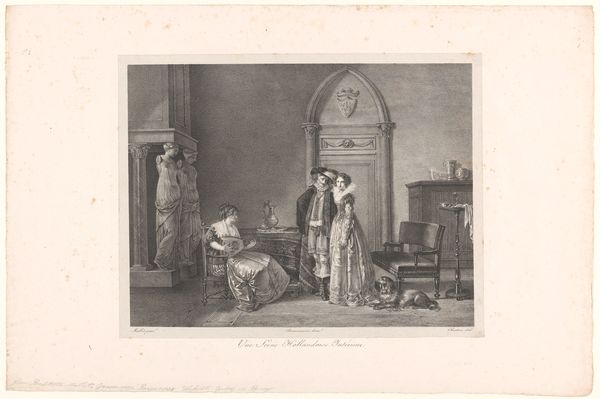
Dimensions: height 571 mm, width 747 mm
Copyright: Rijks Museum: Open Domain
Curator: This is William Henry Simmons' 1857 print, "Boy with Mother in a Second-Class Train Carriage." A poignant example of 19th-century narrative art rendered with remarkable detail. Editor: There’s an overwhelming sense of quiet grief in this depiction of departure. The monochromatic palette adds to the feeling of melancholy and resignation. It reminds me of old photographs. Curator: Absolutely. Consider the specific semiotics of mourning depicted. The mother’s veiled head, the muted clothing of the figures... What cultural anxieties surrounding motherhood and absence does it bring to light, especially during a period marked by significant emigration? Editor: Well, the veil certainly positions her within a specific visual vocabulary of loss, but to me, it evokes universal feelings of familial duty, protection, perhaps even suppression of one’s own desires for the sake of her child's future. What does the train itself represent? This metal horse? Curator: Indeed. The industrial revolution brought increased opportunities, but also widespread displacement, fueling class division, nationalism, and the subjugation of women's rights to a patriarchal ideal. This train, with its stark segregation of classes in carriages and destinations, shows these phenomena quite vividly. Editor: The gaze of the figures pulls me in. They express emotions far deeper than their setting, although I note the suitcases stacked so high--symbols of new beginnings and farewells, of leaving and loss coexisting within a limited space. It feels allegorical. Curator: Allegorical and resonant. The engraving provides social context about gendered divisions of labor, domestic duty, and access to modernity that continues to influence our lived realities even now. Consider that "departure" implies that some will be abandoned, some excluded from access and resources... Editor: That intersectionality of abandonment. Yes, it prompts us to consider cycles of history, patterns of displacement and longing embedded in the cultural DNA. Art endures by mirroring essential human states—sorrow, love, obligation—through resonant symbols. Curator: And hopefully challenging existing hegemonies. Thank you, this analysis helped reveal the complicated, often contradictory ideas circulating at that time regarding personal choice versus the limits society places upon people based on status and expectations. Editor: To me too! By thinking of these figures as both products and active agents, we can reveal both symbolic continuities as well as critical moments for re-thinking our path forward.
Comments
No comments
Be the first to comment and join the conversation on the ultimate creative platform.
